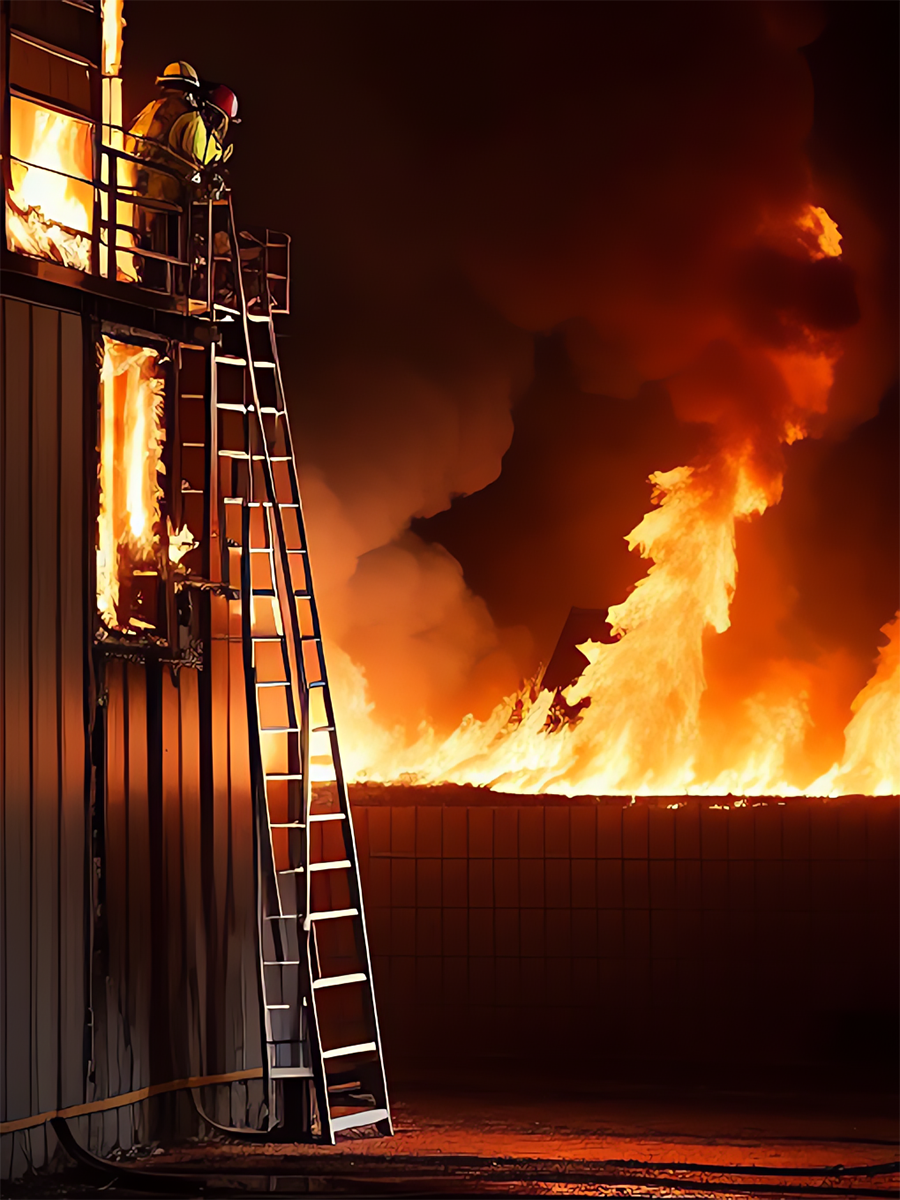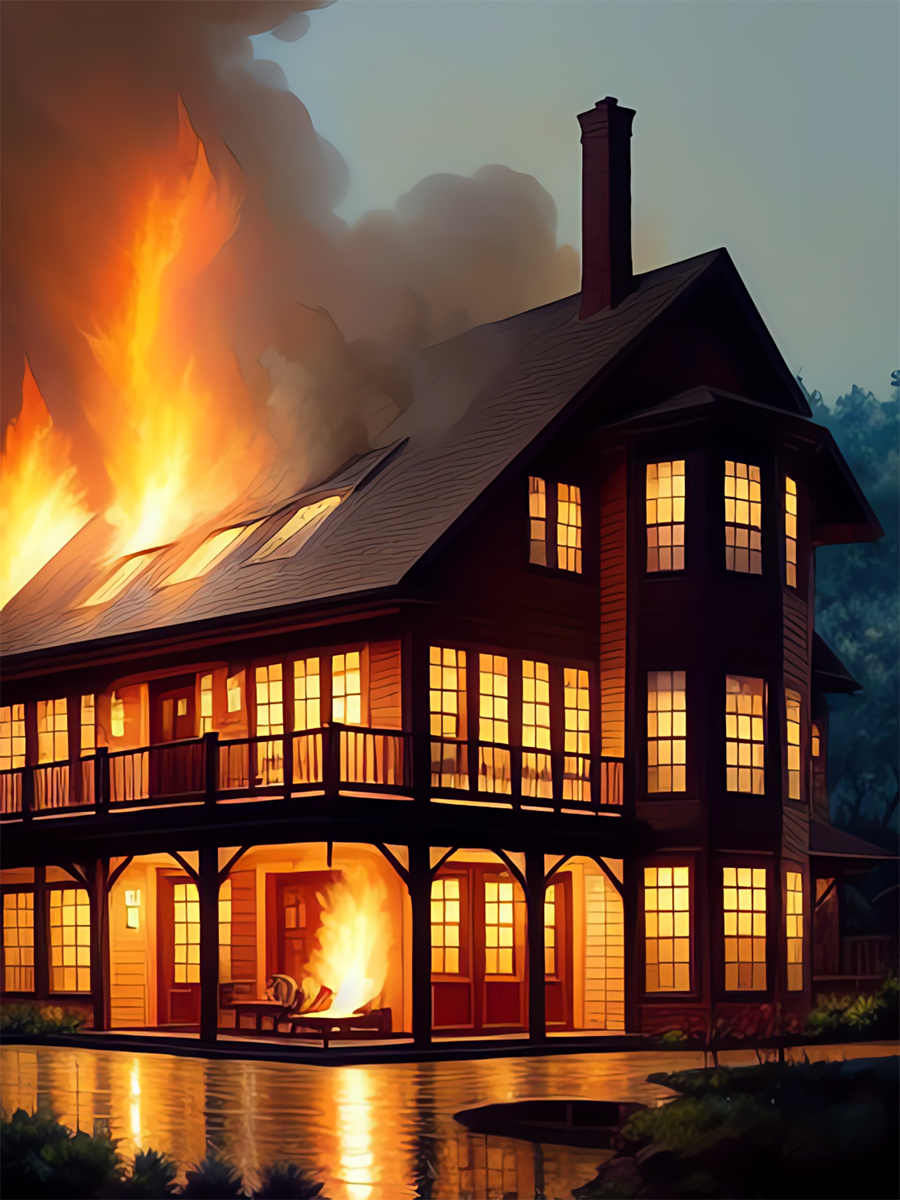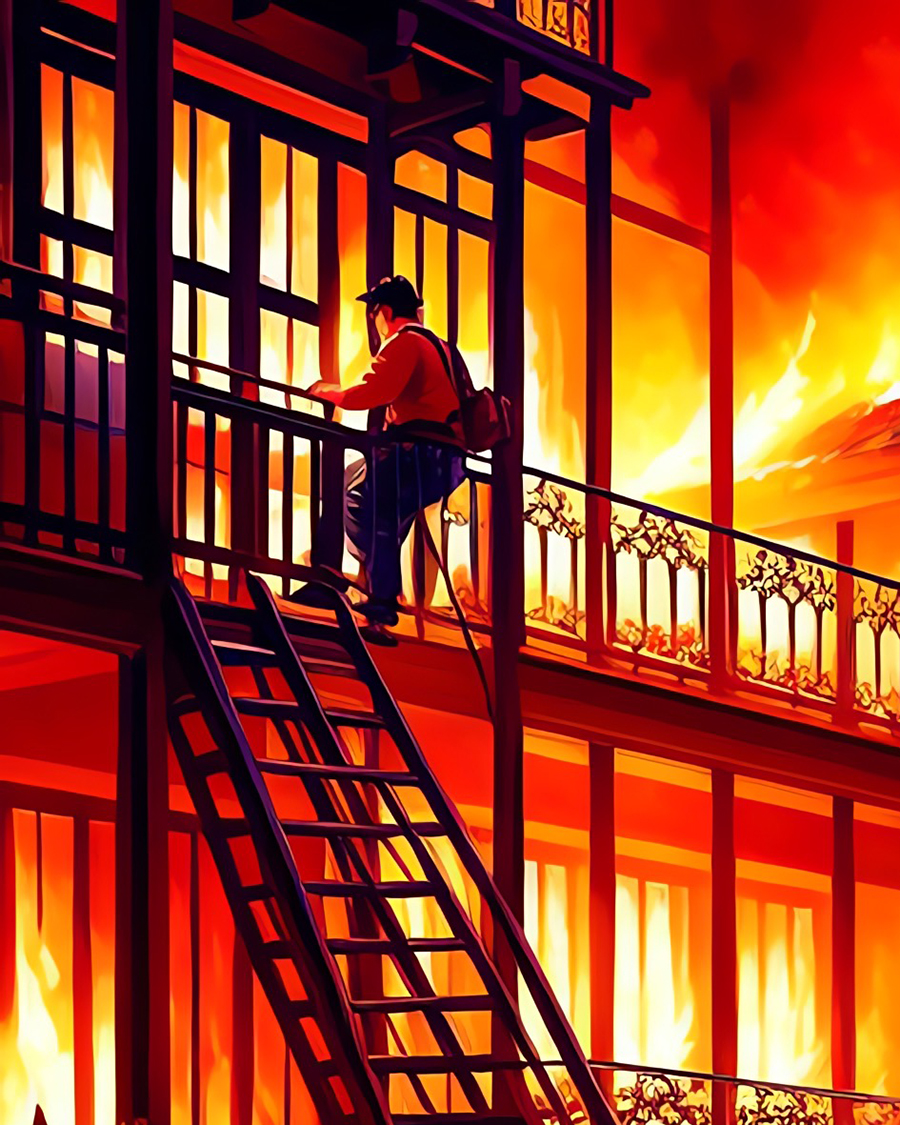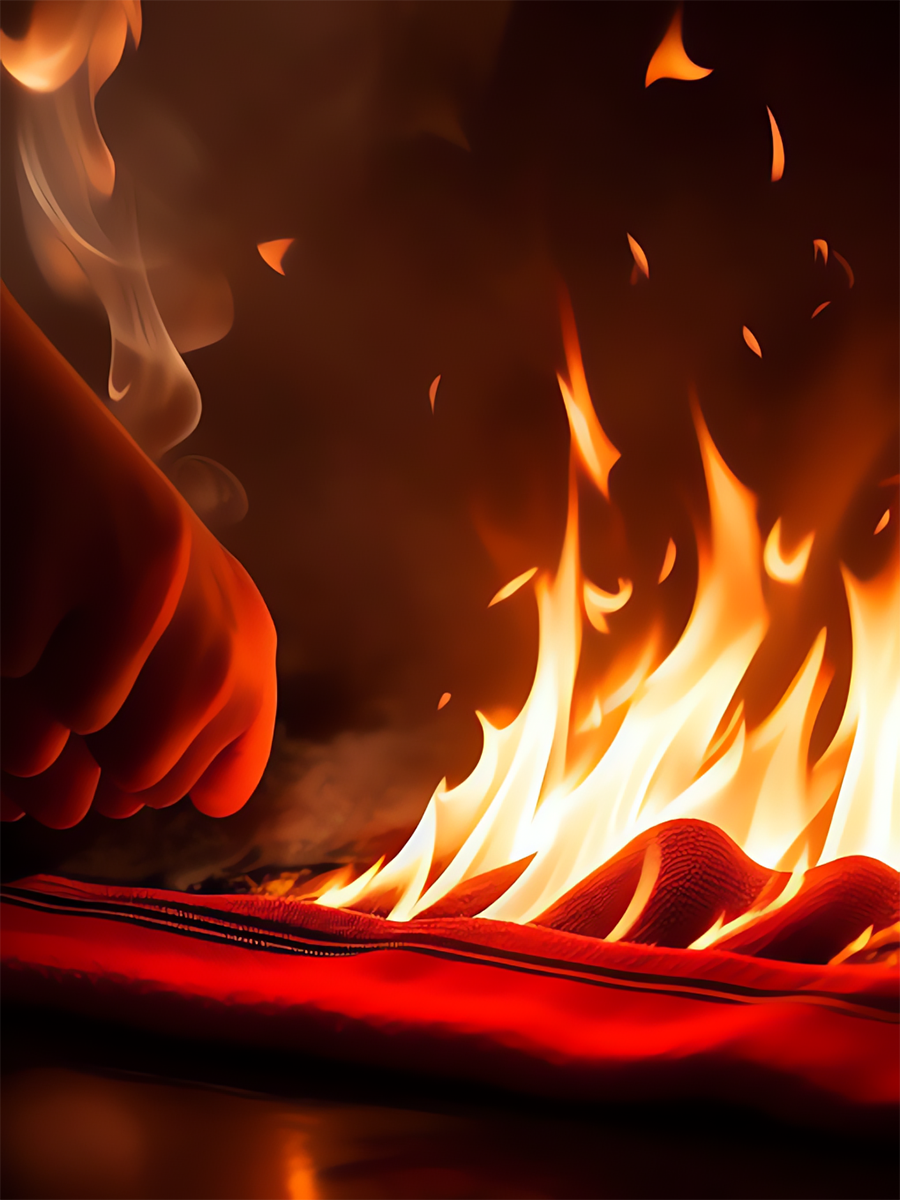The control and use of fire was an epoch-making event in human history. Controlled use of fire has kept us warm during long winters, helped us cook food, and kept us safe from many a beast. However, the catch is, “controlled use”, failing which fire can wreak havoc, turning entire buildings, homes, and entire landscapes into nothing but ash.
Accidents do occur, short circuits, cooking equipment or accessories catching fire, or even children playing with fire, are all common causes for household fires. While it is true that “Prevention is better than cure”, no matter how hard you try, accidents can still happen. Hence, is it necessary to stay prepared and plan for a worst-case scenario. At ISOP we are dedicated to keeping you and your loved ones safe with quality tools.

What forms the basics of fire preparedness are
- Warning systems and fire safety equipment
- Fire escape plans
- Familiarize the escape plan
Warning Systems and Fire Safety Equipment
Here are a few Fire Warning and safety equipment that you can install easily at your home or office.
- Smoke Alarms
Well, you know how they say “There’s no smoke without fire”, in most cases of household fires, there cannot be a fire without smoke. Hence, smoke alarms can act as the first line of defense against fire, alerting you even before you face any danger immediately.
- Automatic Fire Sprinkler
While smoke alarms alert you in case of a fire, Automatic Fire Sprinklers start extinguishing fires as soon as they start, and also trigger other sprinklers in their vicinity to prevent the fire from spreading.
- Fire Extinguishers
How do you like having a firefighter on standby 24/7 at your home, ready to jump in and save the day when a fire starts to wreak havoc? Well, that is exactly what a fire extinguisher is, a mini firefighter in a can.
Experts recommend installing at least a 2 kg fire extinguisher on each level of your household. Remember that fire extinguishers are only one part of fire survival. Only use them to extinguish small self-contained fires or to clear a path for you to escape to safety.
- Fire Ladders
Fire ladders provide an easy and safe way for you to exit your household in case of a fire. Without a doubt, fire ladders are essential but are however more often than not they are neglected. Studies show that only 6% of households in the US have fire ladders.
Getting a safe and reliable ladder can often save you and your loved ones from serious injuries or even death. This is why we, at ISOP, have crafted the best Fire Escape Ladders for multistory houses, useful for both kids and adults. To know more about our fire ladders, click here.
- Fire Blankets
A fire blanket is the superhero cape equivalent for flames, swooping in to douse fires and or shielding your loved ones from all the heat. They are made from fire-resistant materials like Fiberglass and can be your best ally in an emergency scenario. Get your superhero capes right away from our online store.
- Fire Evacuation Device for Pets
If you are like most of us, pets are family. While not all of us are John Wicks, we’d still go to great lengths to keep our pets safe. It is with this in mind, that we have designed the fire evacuation device for pets, to ferry your furry friends to safety during emergencies. Wondering where you can get these? Here, quickly hop on to our online store.

Fire Escape Plans
Now that we have installed the necessary tools to keep us safe in case of a fire. Let us look into how you can make a solid fire escape plan.
- Map out all possible exits
Identify all possible escape routes for each room and ensure that each member is familiar with at least two escape routes. Keep the routes clear of any obstructions, and maybe mark out the paths with glow-in-the-dark tapes.
- Basic fire safety
Teach your loved ones how to proceed in case of a fire. Heads low, covering mouths and noses, and shielding themselves with a fire blanket.
- Designated meeting point
Establish a meeting point, like a neighbor’s porch or the mailbox. The location should be ideally far from the house so that it is safe, but close enough so that everyone can reach there quickly and without any confusion.
- Check the safety equipment
Ensure that the smoke alarms and other fire safety equipment are working once a month. Also, have your household familiarize themselves with the smoke alarm sounds.
- Memorize the emergency phone number of the Fire Department
All household members should memorize the emergency phone number of the local Fire Department or emergency services.
- Once you’re out, stay out
If you managed to get out of your house in an emergency, but realize that someone is missing, inform the emergency respondents. DO NOT GO BACK INTO A BURNING BUILDING.

Familiarize The Escape Plan
As the adage goes, “Practice makes perfect”, try to have mock drills with your family. Keep them as realistic as possible.
If you have children, tell them beforehand that there will be a drill, as the goal is not to frighten them but to practice. See if your children wake up to the sound of the smoke alarms, if not, designate someone to wake them up. If there’s a member with a disability, make the necessary arrangements.
How to survive in a fire?
But what if you find yourself in a burning building? What should you do to survive and get to safety?

- What to do if you’re trapped?
If you find yourself trapped in a room in a burning building, do not open any door without feeling it first. Check if the door is too hot with the back of your hand so as to not burn your palm. If that door is compromised, try to find another exit. If everything fails, seal the space around the door and vents with any available materials, preferably wet clothes or fire retardants, to prevent the entry of smoke and fire.
Even if the door doesn’t feel too hot, open slowly with caution, standing low to one side of the door as fumes and smoke may still enter.
Try to find a phone and contact the emergency services immediately and give them your exact location. If you can’t find a phone, shout as loud as you can. Flash a torch out of the window or signal using bright-colored clothes to give your location.
Try to ventilate your room, by opening windows. If you can’t open them, do not try to break the windows (unless absolutely necessary), especially on the higher floors, as this might cause a rain of broken glass on emergency respondents and others evacuating.
- How to evacuate
If you are the last one to evacuate, do not lock the doors behind you, rather just close them, as locking would impede the emergency respondents’ search and rescue. If your house or building has a designated emergency exit, proceed towards it, if not find the exit as given in the building’s emergency plan.
Most multistory buildings have an emergency stairwell that provide you a safe exit from the building. Try not to panic and only descend towards your designated emergency rendezvous.
The elevator is a no-go. Stay low and crawl if necessary to avoid smoke and toxic fumes. If available, use a mask or damp cloth to cover your mouth and nose, breathe shallowly through it. Hold your breath as much as possible and move swiftly.

- What if someone catches fire
If you find yourself on fire, following these 3 steps can help save your life and reduce injuries.
STOP – moving
DROP – down to the floor
ROLL – around the floor
If you can access a fire blanket or a rug, cover yourself or the person on fire to smother the flames. Do not fan the flames as this will only make things worse. If a fire extinguisher is available, use it.
- When not to fight a fire
Leave the fire fighting to the professionals and try to evacuate the building immediately without panicking. But in case you absolutely have no choice but to fire fight, then do it with caution. Make sure that your back is facing a safe exit route.
- Using extinguishers
While clearing your path out of the building or helping someone on fire, a fire extinguisher can come in handy. Remember to PASS.
P – Pull the pin
A – Aim at the base of the fire
S – Squeeze the handle
S – Sweep from side to side til you extinguish the fire

Final Thoughts
While it is great to be prepared for an emergency scenario, it is more desirable to prevent it from happening in the first place. According to the National Fire Protection Association, there are on average about 358,000 household fires, responsible for nearly 7 deaths a day. Minimizing the risk of fires while equipping yourself with the best safety tools and emergency equipment is the way to go.